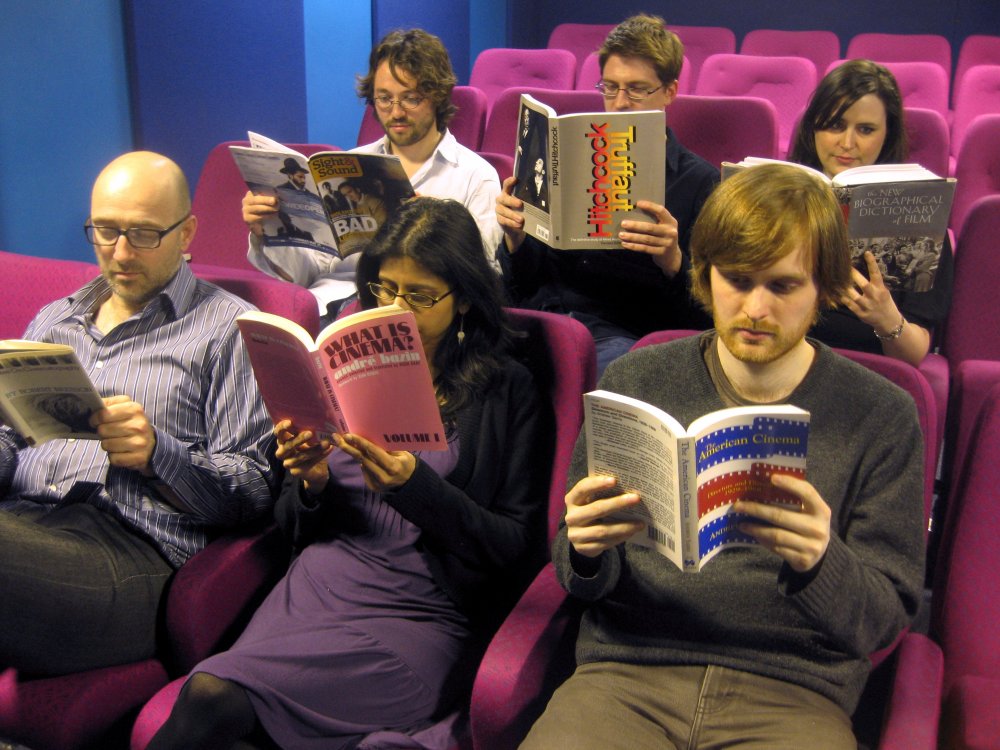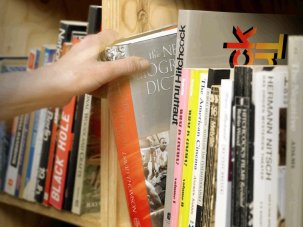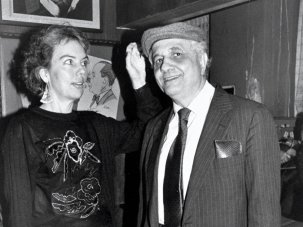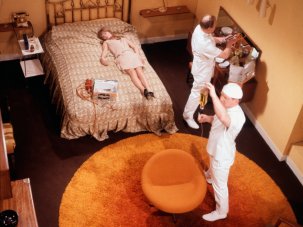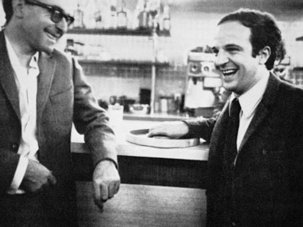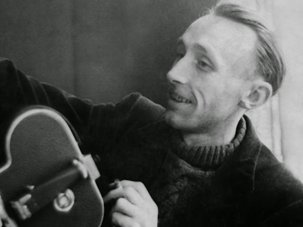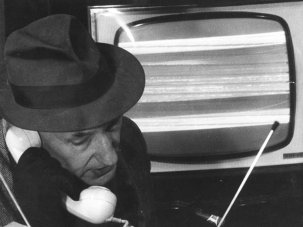1. A Biographical Dictionary of Film
By David Thomson, Secker & Warburg, 1975 (revised 1981, 1994, 2002 & 2010)
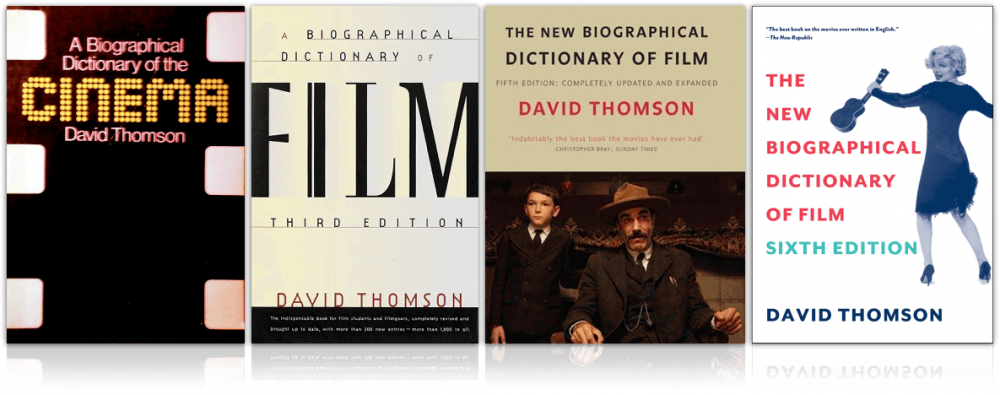
Geoff Dyer, author, UK:
“I would restrict my choice to the various editions (the fifth, I believe, is forthcoming) of David Thomson’s A Biographical Dictionary of Film. I’m sure some future scholar will produce an admirable thesis comparing the changes in – and evolution of – what has come to be, along with everything else, a vicarious and incremental autobiography. In that context, even Thomson’s diminishing interest in cinema – or current cinema at any rate – becomes a source of fascination. The Dictionary is not only an indispensable book about cinema, but one of the most absurdly ambitious literary achievements of our time. It deserves a shelf to itself.”
Thomson on Jean Renoir:
“The Renoir retrospective at London’s National Film Theatre in 1962 amounted to the clearest revelation of the nature of cinema that I have ever had. Again, joy for the medium should not hide Renoir’s melancholy…
“Nor should we underrate Renoir’s own presence in La Règle as another victim of that Cupid who has wings so that he may fly away again. La Règle is still the most dynamic juxtaposition of moods and feelings that cinema has achieved. Thus the shoot is a slaughter in which we do not lose sympathy for the killers. All of the leading characters are felt from moment to moment as being possessed of nobility and foolishness, wisdom and meanness. And as the château is filmed in such depth, with so many briefly revealed perspectives, we see how helplessly people try to hold on to their own nature, almost urging on tragedy as a way of imposing a solution from outside. Renoir is a master at suggesting the frightening flux in a man’s mind as he has to decide between one course or another, and at showing how action is sometimes taken haphazardly simply to evade that abyss…
“Renoir was not a rationalist but an emotionalist. Better to say that all his characters have their own feelings, and it is that shared experience that brings them physically together but that keeps them apart – what La Règle refers to as ‘the exchange of two fantasies and the coming together of two epidermises.’ That is the true severity of Renoir, the recognition of physical need and emotional incompatibility. Here too, Renoir has helped to define cinema, preeminently the form that shows the confrontation of human exteriors but that leaves the interiors to our imagination…
“Renoir asks us to see the variety and muddle of life without settling for one interpretation. He is the greatest of directors; he justifies cinema. But he shrugs off the weight of ‘masterpieces’ or ‘definitive statements’. The impossibility of grasping final solutions or perfect works is his ‘rule’. In Renoir, My Father, and in his own autobiography, My Life and My Films, Jean clearly adopts his father’s wish to float on life like a cork. That same stream carries Boudu away to freedom, wrinkles with pain at the end of Une Partie de Campagne, overflows and endangers precarious existence in The Southerner, and is meaning itself in The River:
“The river runs, the round world spins
Dawn and lamplight, midnight, noon.
Sun follows day, night stars and moon.
The day ends, the end begin.”
=2. Notes on the Cinematographer
By Robert Bresson, Editions Gallimard, 1975
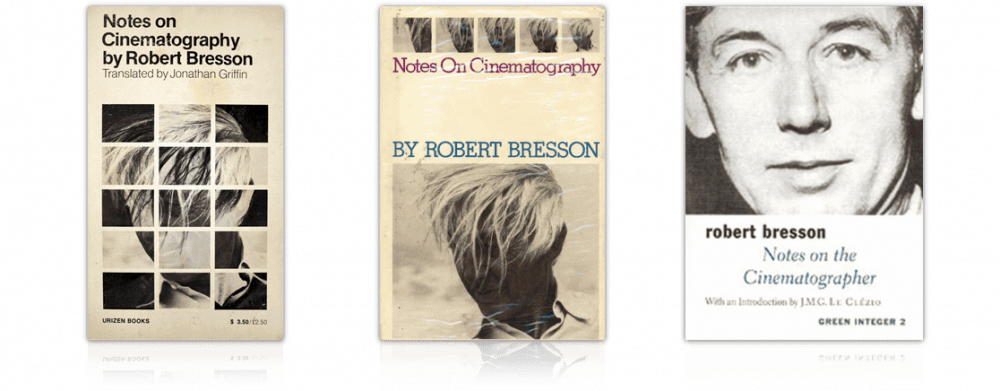
Peter Matthews, critic and academic, UK:
“These aphoristic memos from the logbook of the legendary director are often as inscrutable as Zen Buddhist koans, yet reflecting on them attentively can produce a similar enlightenment. Bresson’s notorious contempt for acting is explained here in the distinction he draws between cinematography (pure writing with images) and mere cinema (still beholden to the mimetic fakery of theatre). The professional player counterfeits truth vaingloriously, whereas the amateur or ‘model’ simply reveals a soul. Essential reading for anyone curious about the physics and metaphysics of the film medium, this slender volume can be profitably revisited over a lifetime.”
Bresson on ‘SIGHT AND HEARING’:
“To know thoroughly what business that sound (or that image) has there.
“What is for the eye must not duplicate what is for the ear.
“If the eye is entirely won, give nothing or almost nothing to the ear. (And vice versa, if the ear is entirely won, give nothing to the eye.) One cannot be at the same time all eye and all ear.
“When a sound can replace an image, cut the image or neutralise it. The ear goes more towards the within, the eye towards the outer.
“A sound must never come to the rescue of an image, nor an image to the rescue of a sound.
“If a sound is the obligatory complement of an image, give preponderance either to the sound, or to the image. If equal, they damage or kill each other, as we say of colours.
“Image and sound must not support each other, but must work each in turn through a sort of relay.
“The eye solicited alone makes the ear impatient, the ear solicited alone makes the eye impatient. Use these impatiences. Power of the cinematographer who appeals to the two senses in a governable way.
Against the tactics of speed, of noise, set tactics of slowness, of silence.”
=2. The American Cinema: Directors and Directions 1929-1968
By Andrew Sarris, Doubleday, 1968
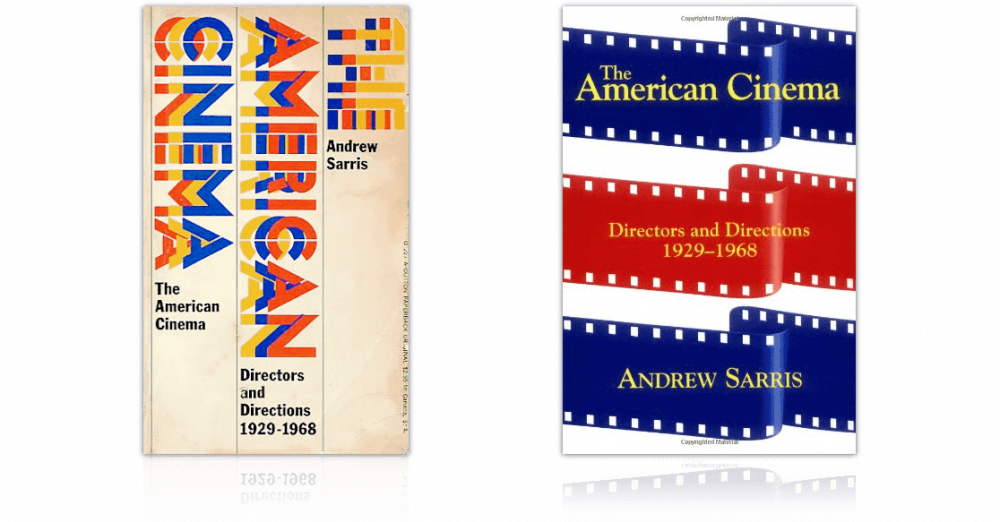
Ian Christie, professor of film history, Birkbeck, UK:
“The book that every young film snob carried around or even memorised in the early 1970s – just in case you might catch a rare Edgar Ulmer B movie in a rep cinema (yes, that’s how we saw films maudits in those days). Sarris’ classification of directors on different levels – from the Pantheon to ‘Lightly Likeable’, via ‘Expressive Esoterica’ and ‘Less than Meets the Eye’ – is imprinted on my attitude to American cinema, and I still have to argue in my head with Sarris’ unforgettably snappy put-downs. Sarris was far more influential than Chabrol, Truffaut and co, I’m sure, in shaping the British politique des auteurs.”
Sarris on Max Ophuls (in The Pantheon):
“The cinema of Max Ophuls translates tracking into walking. His fluid camera follows his characters without controlling them, and it is this stylistic expression of free will that finally sets Ophuls apart from Murnau and Hitchcock. However, the track is such a conspicuous element of film technique that Ophuls has never been sufficiently appreciated for his other merits. Even when he is most bitter, he never descends to caricature. His humor is never malicious, his irony never destructive. Like Renoir, he was one of the first genuinely international directors, the kind of artist who did not slur over national differences in the name of a spurious universality, but who defined national differences as functions of a larger unity. Consequently, Ophuls’s American films, particularly Caught and The Reckless Moment, express a perceptive vision of America’s glamorous fantasies (Caught) and the obsessive absorption with family at the expense of society (The Reckless Moment). Conversely, his treatment of European subjects in The Exile and Letter from an Unknown Woman lent grace and sensibility to the American cinema at a time when it was reeling from its false realism.
“We claim Max as our own only to the extent that he happened to pass in our midst during his long voyage to sublimity. His influence was not so decisive as Murnau’s or so pervasive as Renoir’s. In the final analysis, Ophuls is, like all great directors, inimitable, and if all the dollies and cranes in the world snap to attention when his name is mentioned, it is because he gave camera movement its finest hours in the history of the cinema…
“Some critics, particularly in England, have objected to the softening of Schnitzler’s cynicism in the Ophuls versions of Liebelei and La Ronde, not to mention the Ophulsian rendering of De Maupassant in Le Plaisir. Ophuls himself once observed that Schnitzler wrote Liebelei after Reigen, and not before. The implication is clear. It is cynicism, and not idealism, that is generally the mark of youthful immaturity, or rather it is the cynic who is generally the most foolish romantic. A cynic delights in the trivial deceptions lovers practice on each other, and his attitude is particularly fashionable in a culture dedicated to the happy ending. There is a time in every film critic’s life when he thinks that Billy Wilder is more profound than John Ford, and that nastiness is more profound than nobility. However, the acquiring of moral wisdom comes with mortal awareness, and vice begins paying back all its youthful debts to virtue. At such a moment, Ophuls becomes more profound than Schnitzler and De Maupassant, and Madame de becomes infinitely more tragic than The Bicycle Thief. By showing man in his direst material straits, De Sica and Zavattini imply a solution to his problems. Ophuls offers no such comforting consolation. His elegant characters lack nothing and lose everything. There is no escape from the trap of time. Not even the deepest and sincerest love can deter the now from its rendezvous with the then, and no amount of self-sacrifice can prevent desire from becoming embalmed in memory. ‘Quelle heure est-il?’ ask the characters in La Ronde, but it is always too late, and the moment has always passed.
“This is the ultimate meaning of Ophulsian camera movement: time has no stop…”
=2. Hitchcock
By François Truffaut, Simon & Schuster, 1967
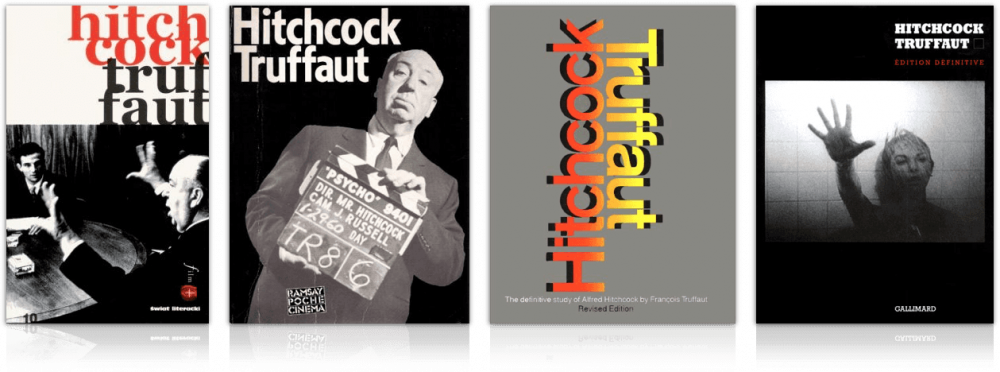
Kevin Jackson, author, UK:
“Doesn’t everyone enjoy these interviews? Highly informative when read innocently, highly entertaining when read for the implied drama: the hero-worshipping young man (who is no dummy, mind), paying court to the urbane old master who seems to give so much away, and yet, cunning trickster/shaman that he is, really yields nothing that could be used in court against him. The dialogue as artform.”
Hitchcock and Truffaut on adapting masterpieces:
François Truffaut: Your own works include a great many adaptations, but mostly they are popular or light entertainment novels, which are so freely refashioned in your own manner that they ultimately become a Hitchcock creation. Many of your admirers would like to see you undertake the screen version of such a major classic as Dostoyevsky’s Crime and Punishment, for instance.
Alfred Hitchcock: Well, I shall never do that, precisely because Crime and Punishment is somebody else’s achievement. There’s been a lot of talk about the way in which Hollywood directors distort literary masterpieces. I’ll have no part of that! What I do is to read a story only once, and if I like the basic idea, I just forget all about the book and start to create cinema. Today I would be unable to tell you the story of Daphne du Maurier’s The Birds. I read it only once, and very quickly at that. An author takes three or four years to write a fine novel; it’s his whole life. Then other people take it over completely. Craftsmen and technicians fiddle around with it and eventually someone winds up as a candidate for an Oscar, while the author is entirely forgotten. I simply can’t see that.
FT: I take it then that you’ll never do a screen version of Crime and Punishment.
AH: Even if I did, it probably wouldn’t be any good.
FT: Why not?
AH: Well, in Dostoyevsky’s novel there are many, many words and all of them have a function.
FT: That’s right. Theoretically, a masterpiece is something that has already found its perfection of form, its definitive form.
AH: Exactly, and to really convey that in cinematic terms, substituting the language of the camera for the written word, one would have to make a six- to ten-hour film. Otherwise, it won’t be any good.
FT: I agree. Moreover, your particular style and the very nature of suspense require a constant play with the flux of time, either by compressing it or, more often, by distending it. Your approach to an adaptation is entirely different from that of most directors.
AH: The ability to shorten or lengthen time is a primary requirement in filmmaking. As you know, there’s no relation whatsoever between real time and filmic time.
3. What is Cinema?
By André Bazin, translated by Huge Gray, University of California Press, 1967 (Volume 1) and 1971 (Volume 2)
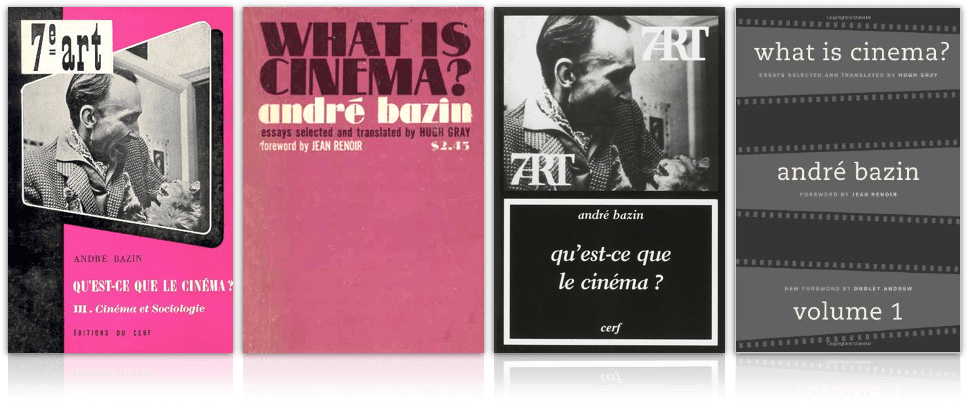
Chris Darke, writer/critic, UK:
“In his clarity of expression and the way he develops theoretical ideas from specific examples, Bazin was a truly great writer on cinema. Two essays from the 1940s are irreplaceable, ‘The Ontology of the Photographic Image’ and ‘The Myth of Total Cinema’, both setting film in art’s longue durée. And should one want to get a handle on the thorny philosophical question of ‘faith’ in the image in the digital era, Bazin remains the first go-to guy…”
Bazin on The Evolution of the Language of Cinema:
“Thus far we have put forward the view that expressionism of montage and image constitute the essence of cinema. And it is precisely on this generally accepted notion that directors from the silent days, such as Erich von Stroheim, F.W. Murnau, and Robert Flaherty, have by implication cast a doubt. In their films, montage plays no part, unless it be the negative one of inevitable elimination where reality superabounds. The camera cannot see everything at once but it makes sure not to lose any part of what it chooses to see. What matters to Flaherty, confronted with Nanook hunting the seal, is the relation between Nanook and the animal; the actual length of the waiting period. Montage could suggest the time involved. Flaherty however confines himself to showing the actual waiting period; the length of the hunt is the very substance of the image, its true object. Thus in the film this episode requires no set-up. Will anyone deny that is it thereby much more moving than a montage by attraction?
“Murnau is interested not so much in time as in the reality of dramatic space. Montage plays no more of a decisive part in Nosferatu than in Sunrise. One might be inclined to think that the plastics of his image are expressionistic. But this would be a superficial view. The composition of his image is in no sense pictorial. It adds nothing to the reality, it does not deform it, it forces it to reveal its structural depth, to bring out the pre-existing relations which become constitutive of the drama. For example, in Tabu, the arrival of a ship from left screen gives an immediate sense of destiny at work so that Murnau has no need to cheat in any way on the uncompromising realism of a film whose settings are completely natural.
“But it is most of all Stroheim who rejects photographic expressionism and the tricks of montage. In his films reality lays itself bare like a suspect confessing under the relentless examination of the commissioner of police. He has one simple rule for direction. Take a close look at the world, keep on doing so, and in the end it will lay bare for you all its cruelty and its ugliness. One could easily imagine as a matter of fact a film by Stroheim composed of a single shot as long-lasting and as close-up as you like.”
- Sight & Sound reviews the latest film books every month.
-
The Digital Edition and Archive quick link
Log in here to your digital edition and archive subscription, take a look at the packages on offer and buy a subscription.




